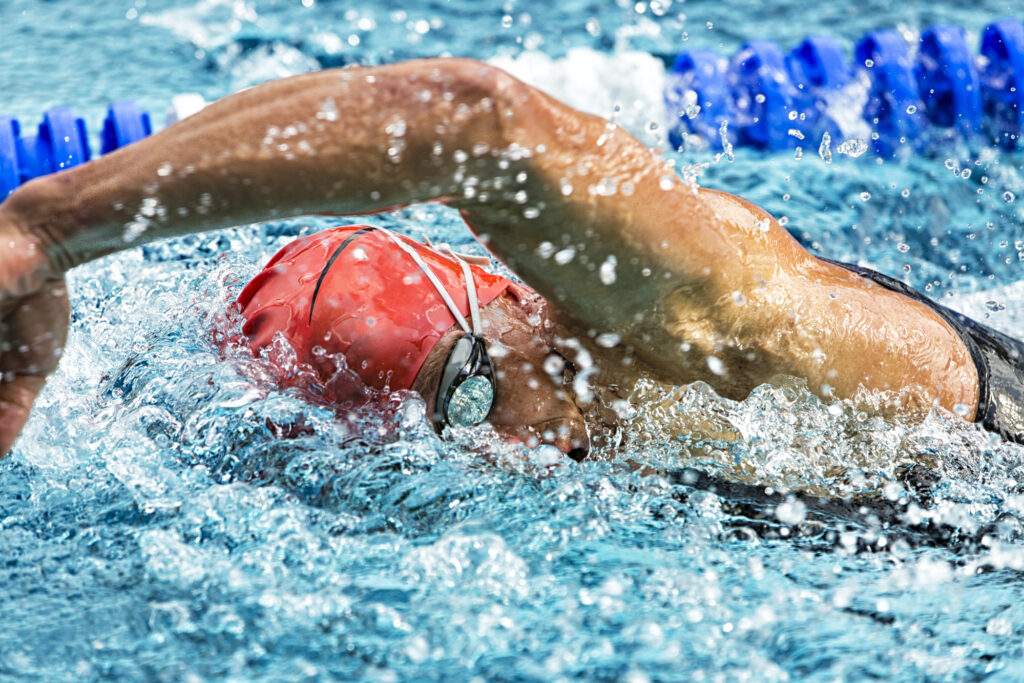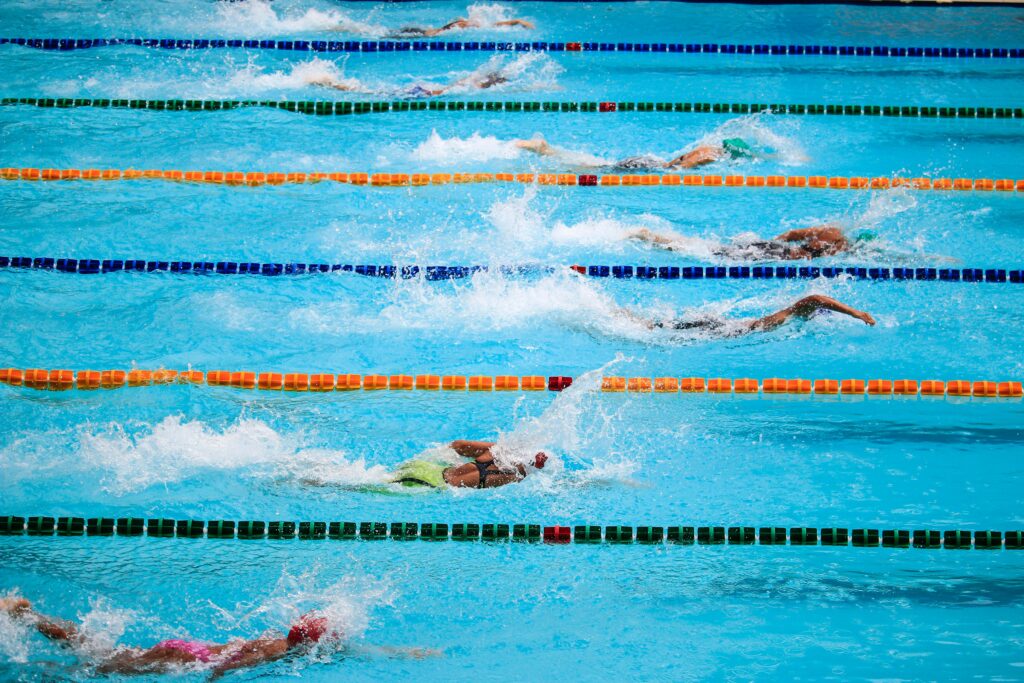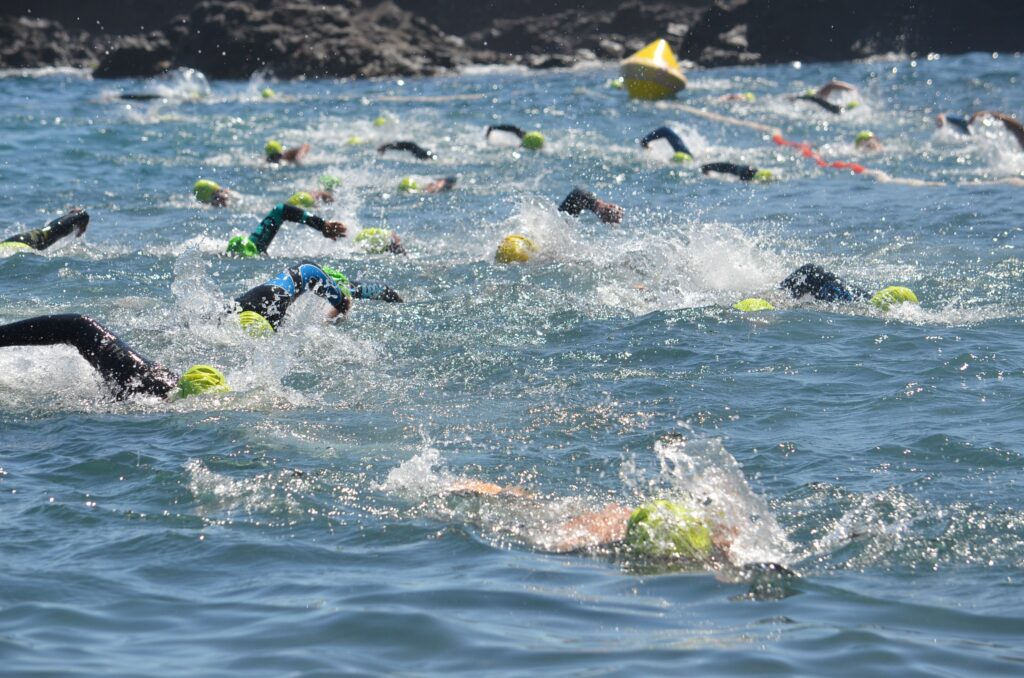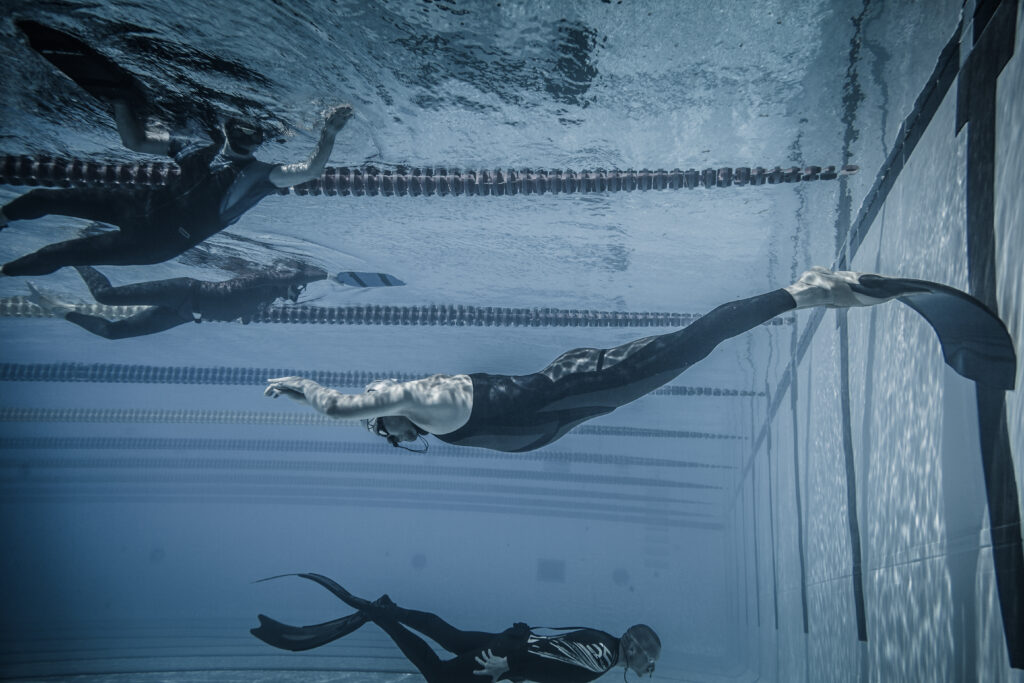Improving breathing technique is a crucial aspect of mastering the front crawl in swimming. It not only enhances overall performance but can also significantly boost the swimmer’s efficiency. Knowing when and how to breathe while engaging in the front crawl can help maintain a consistent stroke, better oxygen supply to the muscles, and can prevent the inadvertent inhalation of water. Swimmers seek to perfect their technique to ensure their movements in the water are both fluid and powerful, allowing them to glide with minimal resistance.
For many swimmers, the act of breathing while maintaining the rhythm of the front crawl is one of the most challenging elements to master. Effective breathing in front crawl requires coordination, timing, and practice. The swimmer needs to integrate the breath seamlessly into the stroke cycle, turning the head to the side in a controlled manner while keeping the body’s rotation in sync. Learning the correct breathing technique helps maintain a streamlined position in the water, which is key to moving swiftly and reducing drag.
Common advice includes exhaling underwater before turning the head to breathe, a method that can prevent the build-up of carbon dioxide and allows for a more efficient intake of air. The breath should be taken quickly and at the right moment in the stroke cycle to avoid disrupting the swimmer’s rhythm. Regular practice and drills can assist swimmers in developing a consistent breathing pattern, which is essential for longer distances where stamina and endurance are tested.
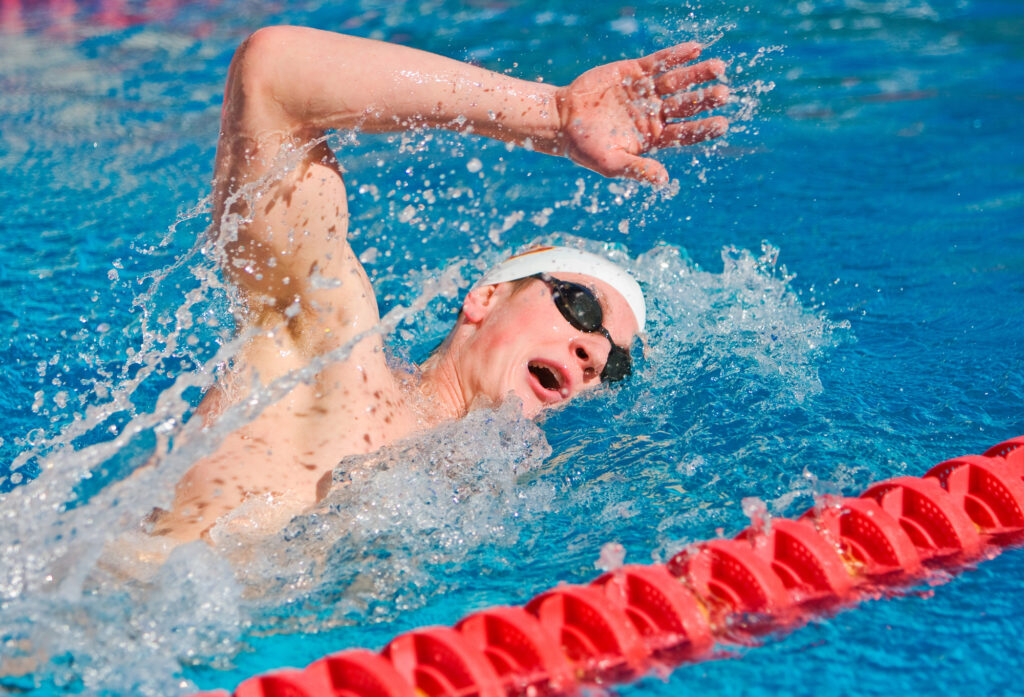
Understanding the Basics of Front Crawl
Mastering the front crawl requires a synergy between effective breathing technique, precise arm and leg movements, and maintaining proper body form. Focusing on these core elements helps swimmers increase efficiency and speed in the water.
Essential Breathing Fundamentals
The breathing technique is paramount in front crawl for maintaining stamina and preventing fatigue. Swimmers should practice exhaling underwater at a steady rate, rather than holding their breath. This ensures that when they rotate their head to take a breath, they can inhale quickly and efficiently. Swimmers often follow a breath cycle, taking a breath every three or five arm strokes, which enhances their rhythm and balance in the water.
Front Crawl Technique and Form
A swimmer’s front crawl technique is characterised by a continuous, alternating arm stroke. Swimmers should keep one arm extended forward while the other pulls through the water, bending at the elbow in an ‘S’ shape path, to propel themselves forward. It’s crucial that the head remains in line with the spine and rotates minimally, just enough to take a breath in the bow wave created by their forward motion.
The Role of Kick in Front Crawl
The kick plays a vital role in maintaining a swimmer’s body position and contributing to forward momentum. A steady flutter kick, originating from the hips rather than the knees, helps to keep the body level and streamlined. Proper kicking also assists with balance and coordination with the arm strokes, which is essential for an efficient front crawl.
Breathing Technique for Front Crawl
Mastering the breathing technique in the front crawl is crucial for efficiency and endurance. Swimmers must focus on rhythm and timing, and choose between unilateral and bilateral breathing methods to optimise their performance.
Rhythm and Timing in Breathing
The rhythm of breathing in front crawl is essential; it should be synchronised with the stroke to maintain speed and balance. Swimmers typically adopt a breath cycle every three to five arm strokes, ensuring they exhale fully underwater before turning to inhale. This cycle helps swimmers to maintain a consistent speed and avoid hyperventilation.
Unilateral vs Bilateral Breathing
Unilateral breathing refers to breathing on one side only, which can lead to muscle imbalance over time. However, it allows swimmers to maintain a quicker rhythm and may be preferable in certain racing situations or choppy water to avoid inhaling splashes.
On the other hand, bilateral breathing, or breathing alternately on both sides every three, five or seven strokes, promotes symmetry in stroke. It helps in improving navigation and balance while swimming.
Each method has its merits, and swimmers might choose one over the other based on their comfort, stroke mechanics, and the race environment. Training with both methods can enhance overall technique and adaptability in various swimming conditions.
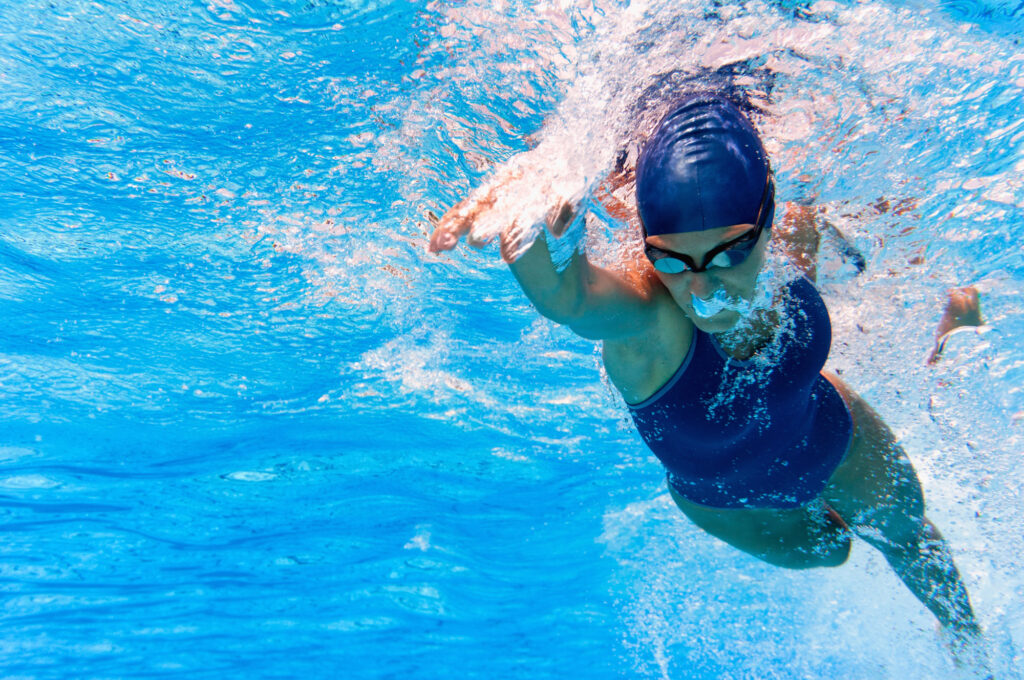
Enhancing Breathing Efficiency
Improving breathing efficiency in the front crawl requires strategic exercises and drills designed to optimise lung capacity and establish consistent breathing patterns. Swimmers must focus on tailoring these aspects to suit their level of skill and endurance for a more streamlined swimming experience.
Breathing Patterns and Lung Capacity
One’s lung capacity is integral to their ability to swim extended distances without fatigue. Swimmers are usually advised to follow a breath cycle every three or five arm strokes to maintain a steady supply of oxygen. This cadence allows for minimal disruptions to the stroke rhythm. Incorporating breathing exercises like controlled inhalations and complete exhalations can significantly enhance lung efficiency. By regularly practising these exercises both in and out of the pool, swimmers can expand their lung capacity, which in turn improves oxygen delivery and CO2 expulsion during swimming.
Breathing Drills for Improving Technique
To improve the technical aspect of breathing in the front crawl, specific swimming drills are employed. An example is the Kick on board drill, where a swimmer uses a kickboard to focus on breathing in a rhythmic pattern: exhaling underwater for a count of two seconds followed by a two-second inhalation. Consistency in such drills enforces a habit of not lifting the head too high during breaths, which could disrupt the swimmer’s balance and stroke efficiency. Frequent practice of these breathing drills ensures that the swimmer’s head and body movements are synchronised, allowing for a more efficient and injury-free swimming technique.
Refining the Swim Stroke for Better Breathing
Improving your breathing while performing the front crawl is intrinsically linked with refining your swim stroke. They must address the arm pull and recovery as well as the leg kick and body rotation to create a streamlined form that supports efficient oxygen intake.
Arm Pull and Recovery
The arm pull should be smooth, starting from full extension as the hand enters the water. As the swimmer pulls their arm through the water, keeping the elbow higher than the hand is crucial for a powerful pull that propels them forward. The motion should resemble an ‘S’ shape, starting wide and ending close to the body to maximise power and minimise resistance. During the arm recovery phase, the arm should exit the water with the elbow leading, continuing in a relaxed motion over the surface, returning it to the entry point in preparation for the next stroke.
Leg Kick and Body Rotation
A compact and consistent leg kick plays a pivotal role in maintaining a streamlined posture. The kick should originate from the hips, not the knees, with a slight bend in the leg on the down-kick to maximise propulsion. A rhythmical and fluent kick helps in stabilising the body along with aiding in rotation.
Body rotation is an essential component when breathing during the front crawl. The swimmer’s body should rotate along the longitudinal axis with each stroke, allowing them to rotate their head to the side more effortlessly for breath intake without lifting it out of the water, thus keeping the body streamlined. This rotation is generated from the torso, not the shoulders, enabling an efficient stroke and aiding in the overall synchronicity between the breath and the swim stroke.
Breathing Adjustments for Different Swimming Conditions
When adjusting breathing techniques, swimmers should consider the environment in which they’re swimming and the pace at which they are moving through the water. These factors require specific strategies to maintain efficiency and comfort during the front crawl stroke.
From Practice to Open Water
Transitioning from the controlled environment of a pool to the unpredictable nature of open water necessitates changes in one’s breathing pattern. In open water, swimmers contend with variables such as waves, swells, and the absence of clear directional lines on the bottom. Beginners may find this quite challenging as the rhythm and frequency of breathing that worked in the pool might not suit open water conditions. It is crucial for a swimmer to become well-versed in bilateral breathing, which involves alternating breathing between both sides, to maintain balance and navigate effectively. It can provide better visibility and balance in the water, helping to deal with choppy conditions and avoid continuously breathing on the side with oncoming waves.
- For experienced swimmers: They might focus on adapting the frequency of breaths to match the rhythm of the waves.
- For beginners: They should start with practising bilateral breathing in the pool before attempting open water swims.
Adapting to Different Swimming Paces
Whether sprinting or engaging in long-distance swimming, the front crawl stroke pace changes, which demands different breathing techniques. During a sprint, a swimmer might opt for faster and more shallow breaths to maintain high speed, involving breathing every 2 to 4 strokes. This ensures that oxygen delivery is in sync with the elevated demand of quick muscle movements.
In contrast, long-distance swimming often requires a more measured approach to conserve energy. Swimmers may breathe every 3 to 5 strokes, allowing for deeper breaths and increased oxygen uptake. It’s imperative for swimmers to learn how to adjust their breathing rhythm to the pace of their strokes to optimise performance and endurance.
- For beginners: Mastery of a consistent breathing pattern is key, starting with breathing every 3 strokes and gradually adapting as their pace changes.
- For experienced swimmers: They may utilise a varied breathing pattern, such as a 3/2/3/2 cycle, to align their breath with changes in stroke intensity and pace.
Troubleshooting Common Breathing Issues
When swimming front crawl, efficient breathing is critical. This section will address how swimmers can overcome panic, enhance relaxation, and manage breathing fatigue due to lactic acid accumulation.
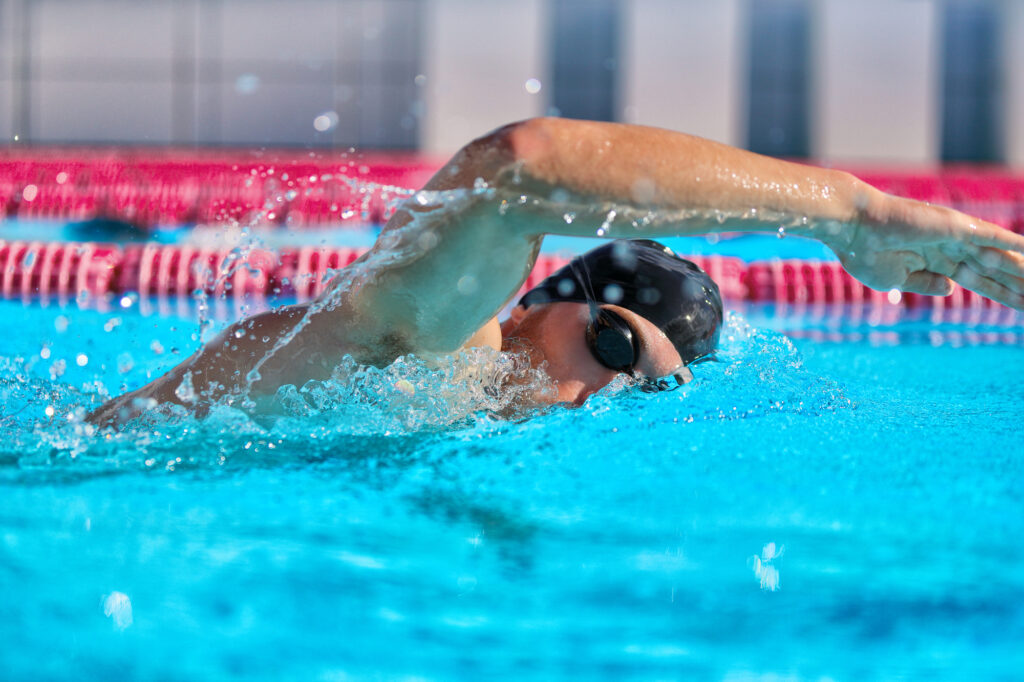
Overcoming Panic and Building Relaxation
Panic can often set in when swimmers feel short of breath or are unable to regulate breathing rhythmically. To overcome panic, one should focus on exhalation. Exhaling fully under water can prevent the sense of breathlessness that leads to panic. Specific techniques for exhalation can include a gentle continuous breath out through the nose or a combination of nose and mouth. Practising breathing exercises outside the pool can also help swimmers remain calm. They might benefit from standing in shallow water, exhaling slowly until the lungs are empty, and establishing a routine that includes these relaxed breathing patterns, which are endorsed by Swim England.
Addressing Breathing Fatigue and Lactic Acid Buildup
Fatigue while swimming front crawl might be a sign of inefficient oxygen use and lactic acid buildup in muscles. To address this issue, it’s important for swimmers to not only work on their breathing technique but also their overall swimming efficiency. Rotation of the body is key for efficient front crawl swimming, as it can reduce strain and thus the production of lactic acid. Swim experts recommend a strategy of incorporating rolling of the head and body to maintain a streamlined position. This not only improves the ability to breathe without lifting the head too high but also minimises the tiring resistance against water. A drill like ‘3-10-3’ can be an effective tool for this, as it combines breathing, strokes, and kicks to maintain optimal position, as suggested by US Masters Swimming. By addressing these elements, swimmers can improve their endurance and reduce fatigue caused by lactic acid.
Advanced Breathing Strategies
The mastery of front crawl breathing requires a strategic approach that extends beyond basic techniques, focusing on improving one’s fitness and integrating breathing within a competitive context.
Enhancing Breathing Through Fitness and Exercises
Fitness plays a critical role in enhancing one’s breathing capacity during swimming. A swimmer must consider a holistic approach to fitness which targets cardiovascular endurance, as well as specific muscles.
- Cardiovascular Endurance: Activities like running, cycling, and rowing can boost overall endurance, supporting prolonged swimming sessions.
- Muscle Conditioning: Core and diaphragm strengthening exercises complement breathing technique by ensuring stability and efficient air exchange.
Strength exercises for the core and respiratory muscles lay the foundation for building better control over breath coordination. Engaging in diaphragm exercises can help a swimmer to exhale more effectively under water, which is crucial to maintaining a steady breathing rhythm.
Incorporating Breathing into Competitive Swimming
In competitive swimming, form and efficiency are vital. Swimmers must integrate advanced breathing strategies to maintain speed and endurance throughout a race.
- Bilateral Breathing: This involves breathing on both sides to balance out the stroke and maintain a symmetric form.
- Breathing Patterns: Adapting a breathing pattern, like breathing every three or five strokes, can help conserve energy and maintain a consistent rhythm. Swimmers should train with various patterns to find what suits them best.
A swimmer should aim to implement breathing patterns that align with their stroke rate and competitive needs. By practicing rotational breathing, a technique where the head and body turn in unison, swimmers can minimise resistance and maintain a streamlined form in water.
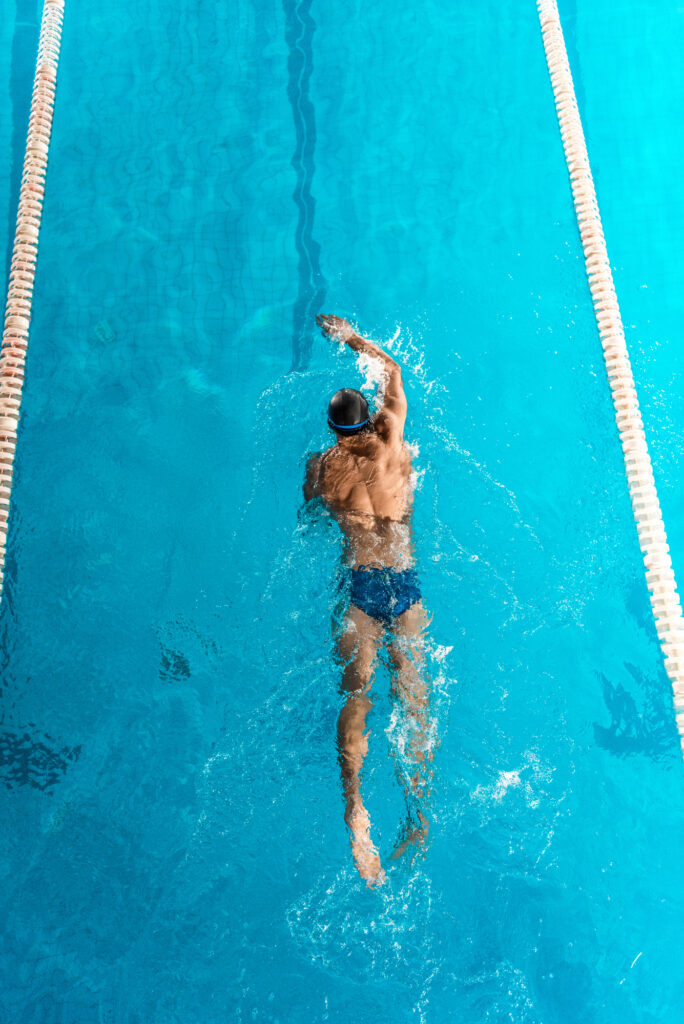
Supplementary Materials and Resources
For swimmers seeking to enhance their front crawl breathing technique, several resources are crucial. One key material is an eBook, which can serve as a comprehensive guide to mastering the basics of front crawl breathing.
- eBooks:
- “Mastering Front Crawl Breathing” – An eBook that addresses common breathing challenges and offers step-by-step instructions for development.
- Online Videos:
- Instructional clips with visual demonstrations on sites like Swim England and Swim Now UK that emphasise the importance of proper exhalation and inhalation.
- Training Tools:
- A swim snorkel can help maintain proper head position.
- A front crawl breathing trainer, which can assist athletes in establishing a regular breathing pattern.
| Resource Type | Description | Usefulness |
|---|---|---|
| eBook | “Mastering Front Crawl Breathing” | Offers a structured approach to learning |
| Online Videos | Demonstrations by professionals | Visual learning of techniques |
| Training Tools | Snorkels and trainers | Hands-on practice and technique adjustment |
For tailored guidance, swimmers can reference “Front Crawl Breathing Tips” from Swim England which advocates a breath cycle every three or five strokes, ensuring one breathes out under water.
Similarly, instructional steps from Swim Now UK can assist in understanding body rotation—vital for efficient breathing.
It is critical for swimmers to recognise the correct technique for exhaling and turning the head to the side without lifting it. Incorrect head positioning can lead to sinking legs and a disturbed body position.
In summary, swimmers are encouraged to utilise eBooks, instructive videos, and specialised training tools to improve their front crawl breathing proficiency.
Frequently Asked Questions

In this section, readers will find answers to common queries regarding breathing techniques in front crawl swimming, helping to enhance performance and comfort.
What are effective breathing techniques for beginner front crawl swimmers?
For beginners, it’s crucial to learn to breathe to the side instead of lifting the head, which can disrupt the body’s alignment. They should exhilate under water and turn their head to breathe after every few strokes. Focus on consistent and relaxed breathing to maintain energy and form.
Should I breathe through my nose or mouth during front crawl swimming?
Swimmers can breathe through their mouth, nose, or a combination of both during front crawl. The key is to perform a trickle or explosive exhale under water before turning the head to take a breath.
Can the 3-5-7 breathing technique enhance my front crawl performance?
The 3-5-7 breathing pattern—breathing every three, five, and seven strokes—can help swimmers build lung capacity and improve rhythm. By varying the breathing cycle, swimmers can avoid overusing one side of their body and develop bilateral breathing skills.
How frequently should I breathe while doing the front crawl?
Breathing frequency can be adjusted according to individual comfort and the intensity of the swim. For beginners, starting with breathing every two or three strokes is common. As swimmers become more advanced, they might extend the cycle to every third or fifth stroke.
Why do I feel breathless when swimming front crawl, and how can I manage this?
Feeling breathless can be due to insufficient oxygen intake or poor breathing technique. Swimmers should ensure they’re breathing out fully underwater and taking a full breath when rotating to the side. Practising trickle breathing and pacing can help manage breathlessness.
What is the ideal breathing pattern to adopt for longer distance front crawl swimming?
For longer distances, swimmers should focus on a relaxed and sustainable breathing pattern. Breathing every three strokes, also known as bilateral breathing, promotes balance and oxygen distribution. It’s important to maintain a steady and efficient breathing technique to conserve energy over the distance.

